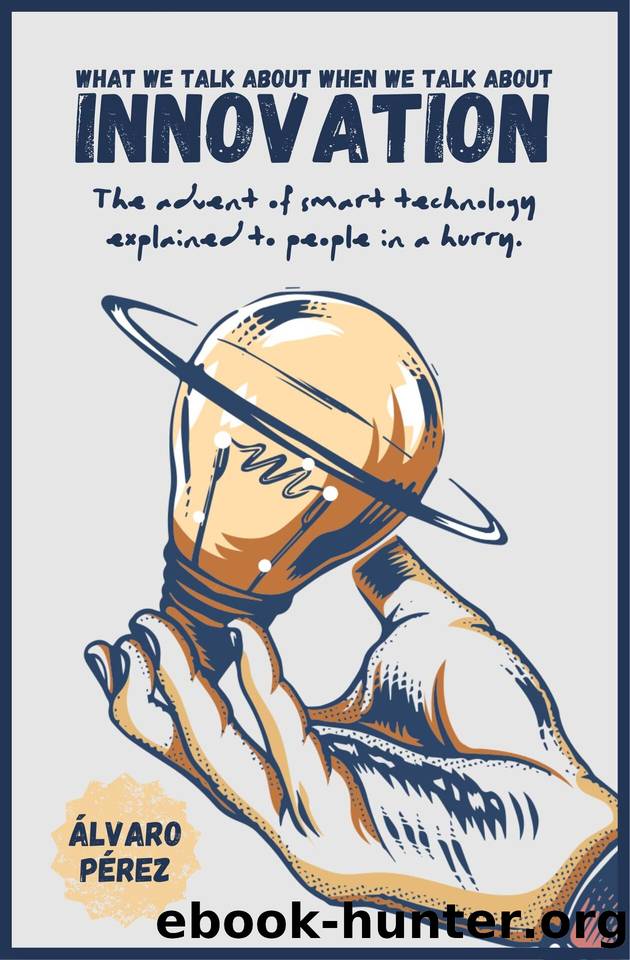What we talk about when we talk about innovation: The advent of smart technology explained to people in a hurry by Perez Alvaro

Author:Perez, Alvaro [Perez, Alvaro]
Language: eng
Format: epub
Published: 2020-06-20T16:00:00+00:00
Which of the following options would you prefer?
Case 1: A sure win of $250, or a 25% chance of winning $1000 and a 75% chance of winning nothing?
Case 2: A sure loss of $750, or a 75% chance of losing $1000 and a 25% chance of losing nothing?
If we calculate the expected value—summation of the probabilities multiplied by the returns—both scenarios are the same. But Kahneman and Tversky shrewdly observed that human behavior differs in win-loss scenarios. Our risk aversion is greater in cases of loss. A majority would thus choose the first option in the first case, securing a profit, while taking the second option in the second case, risking a larger loss as long as they kept some hope of not losing anything. People who have invested in the stock market or traded intraday recognize this phenomenon: most stockholders are reluctant to cut a losing position and extend it until bankrupt. But as soon as those same stockholders see green numbers, they give up their patience to close the position so they can reap the benefits. This practice returns quick, small profits and long, deep losses. For not respecting basic principles of monetary management and expected value, between 80% and 95% of investors lose money trading, mainly for psychological reasons. This phenomenon happens because humans are less receptive to a certain failure scenario. We are more inclined to risk the possibility of falling a little more.
Similarly, people will tend to find the price of a product that has been downgraded from a full configuration for a discount more attractive than the opposite (i.e. starting from a basic product and charging higher) even though the final configuration and price are the same. This behavior, apparently irrational from the point of view of classical economic theory—according to which, the homo oeconomicus always makes rational decisions—is precisely how our mind works when it comes to buying.
What does this tell us? The Nespresso example teaches that we don’t need something new to have a successful enterprise. The works of Kahneman, Tversky, and MacLean show that humans do not consistently make judicious choices in economic scenarios. Having an excellent product does not guarantee sales if we do not know what people want. Larry Keeley talks about at least ten different types of innovation: 1 in the profit model, in the network of contacts with which you can integrate your offer, in the organizational structure, in the processes, in the product’s functionality (which may generate previously unknown needs), in the packaging (how you complement it with accessories), in client service, in the sales channel, in the brand, and in the customer engagement. We will comment on several of these methods of innovating throughout the book. There are oceans full of alternatives on how to innovate, even if your product is as simple as a blank sheet of paper. When you think about innovating, attack all five senses. Think about sight, taste, hearing, touch, and smell and then think about what you don’t feel: the heart, the feelings, the social status.
Download
This site does not store any files on its server. We only index and link to content provided by other sites. Please contact the content providers to delete copyright contents if any and email us, we'll remove relevant links or contents immediately.
Bad Blood by John Carreyrou(6466)
Rich Dad Poor Dad by Robert T. Kiyosaki(6306)
Principles: Life and Work by Ray Dalio(6110)
Playing to Win_ How Strategy Really Works by A.G. Lafley & Roger L. Martin(5716)
Management Strategies for the Cloud Revolution: How Cloud Computing Is Transforming Business and Why You Can't Afford to Be Left Behind by Charles Babcock(4486)
The Confidence Code by Katty Kay(4146)
Thinking in Bets by Annie Duke(4112)
American Kingpin by Nick Bilton(3699)
Delivering Happiness by Tony Hsieh(3324)
Project Animal Farm: An Accidental Journey into the Secret World of Farming and the Truth About Our Food by Sonia Faruqi(3133)
The Power of Habit by Charles Duhigg(3004)
The Tyranny of Metrics by Jerry Z. Muller(2948)
Mastering Bitcoin: Programming the Open Blockchain by Andreas M. Antonopoulos(2944)
Brotopia by Emily Chang(2941)
I Live in the Future & Here's How It Works by Nick Bilton(2895)
The Marketing Plan Handbook: Develop Big-Picture Marketing Plans for Pennies on the Dollar by Robert W. Bly(2891)
The Content Trap by Bharat Anand(2830)
Applied Empathy by Michael Ventura(2803)
Building a StoryBrand by Donald Miller(2800)
